Celebrating Westwood Studios’ forgotten RTS.

Imagine a universe where Patrick Stewart charges into battle holding a pug and firing sound at people, where Sting plays a ginger psycho lubed up with baby oil, and where Freddie Jones is forced at syringe point to suckle milk from a cat—all whilst under the watchful eye of a gigantic spice-puffing space vagina.
I am of course talking about David Lynch’s 1984 film, Dune, the adaptation for the big screen of Frank Herbert’s epic sci-finovel.
Dune is an intriguing and complex story about time and space, bravery and betrayal, and ultimately about one young man’s destiny to unite a universe. Set in the year 10191, the story sees two great houses battling for control of the desolate sand planet Arrakis. The planet’s mysterious spice is harvested to fund war, giant tank-eating worms roam its surface, and its indigenous Fremen warriors hold a great secret.
The Dune universe first came to PC in Cryo’s modest 1992 adventure game, however it’s undoubtedly Westwood Studios’ 1993 masterpiece, Dune II, for which the universe is best remembered on PC. Dune II: Battle for Arrakis, or Dune II: Building of a Dynasty as it was known in North America, played a pivotal role in the formation of real time strategy as a genre, and laid solid foundations for the beloved Command & Conquer that came a year later.
Then, in 1998, and in the shadow of both Command & Conquer and Red Alert, Westwood and Intelligent Games released the now largely forgotten Dune 2000.
Denne historien er fra September 2019-utgaven av PC Gamer US Edition.
Start din 7-dagers gratis prøveperiode på Magzter GOLD for å få tilgang til tusenvis av utvalgte premiumhistorier og 9000+ magasiner og aviser.
Allerede abonnent ? Logg på
Denne historien er fra September 2019-utgaven av PC Gamer US Edition.
Start din 7-dagers gratis prøveperiode på Magzter GOLD for å få tilgang til tusenvis av utvalgte premiumhistorier og 9000+ magasiner og aviser.
Allerede abonnent? Logg på

"The War Within itself has kept me coming back most evenings too"
WORLD OF WARCRAFT remains my jailer, and I couldn't be more pleased about it
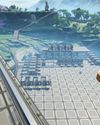
OK BUILDER
SATISFACTORY is the new titan in building and crafting games

HELL YES
DIABLO IV: VESSEL OF HATRED is a transformative expansion
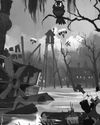
MOUSE: PI FOR HIRE
This mouse wants to be more than just a gimmick

WINDBLOWN
Dead Cells dev's new roguelike has me afraid for my free time
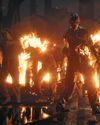
NO MORE ROOM IN HELL 2
As the zombie horde surrounded me just moments after taking down my two remaining teammates, the writing was really on the wall. Armed with just a chef's knife, it was clear I stood no chance, but I was going down swinging, hoping for a miracle... it didn't come.

OWNED BY STEAM
VALVE cordially reminds you that your games aren't yours

CURSE OF THE AZURE BONDS
These classic games haven't aged badly, but I sure have.
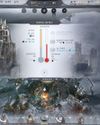
DEEP FREEZE
Endure a blizzard of tough choices and rough consequences in FROSTPUNK 2
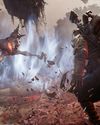
NEW HORIZONS
Building up REMNANT 2 outside the live service game grinder